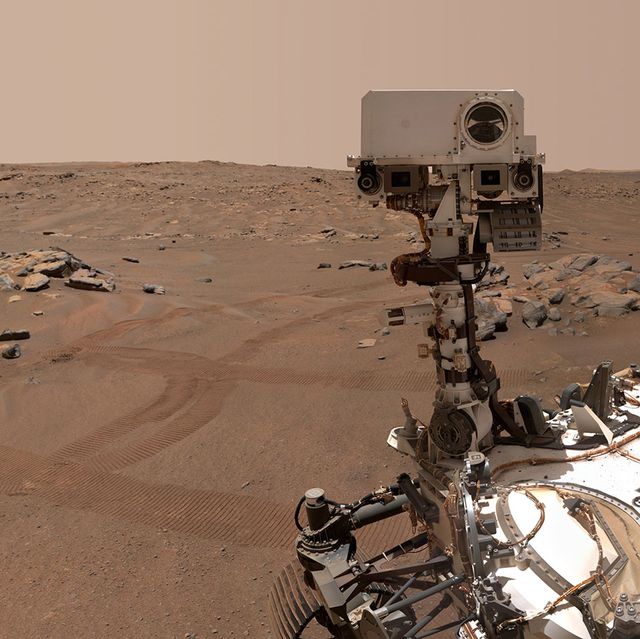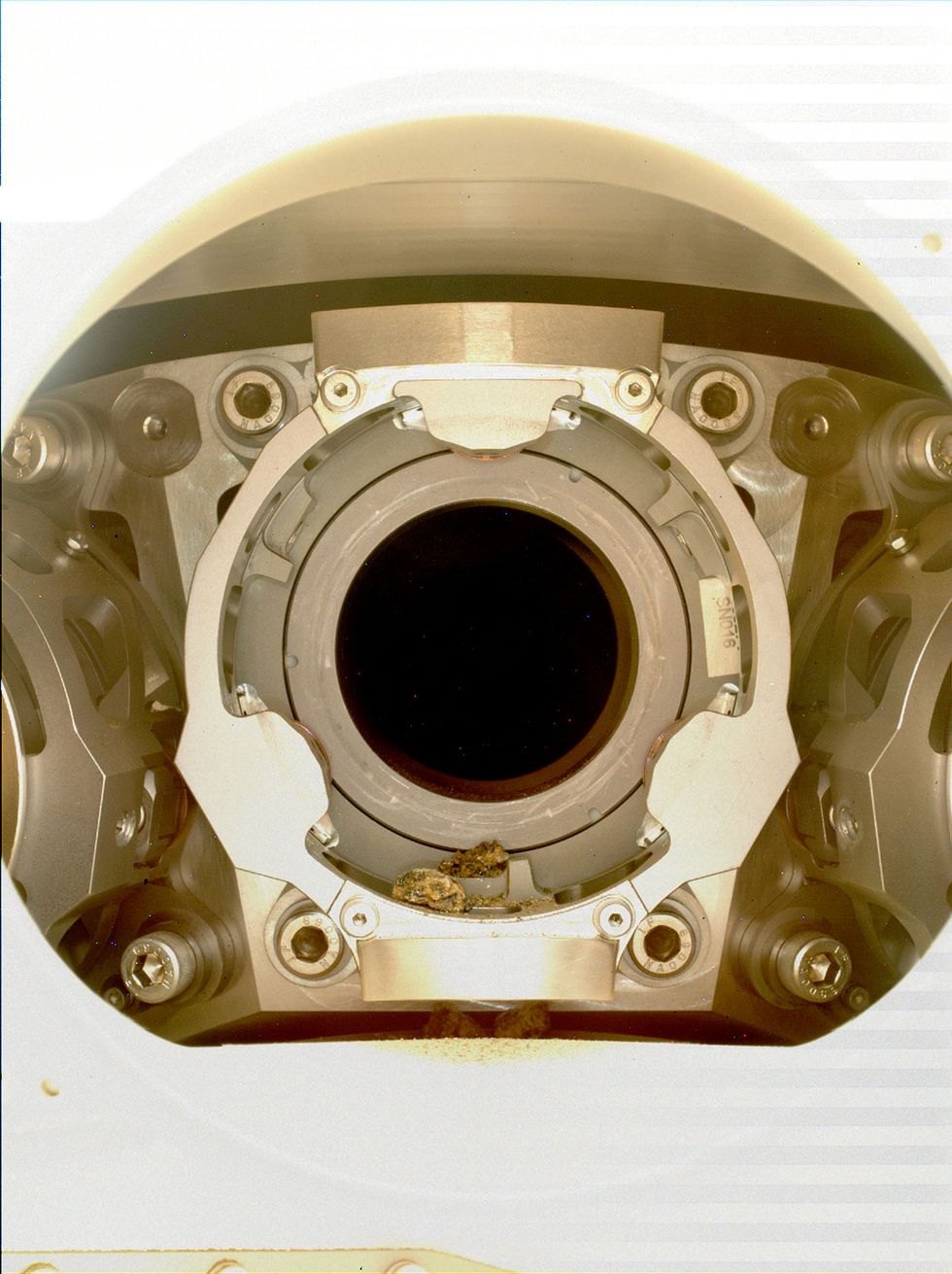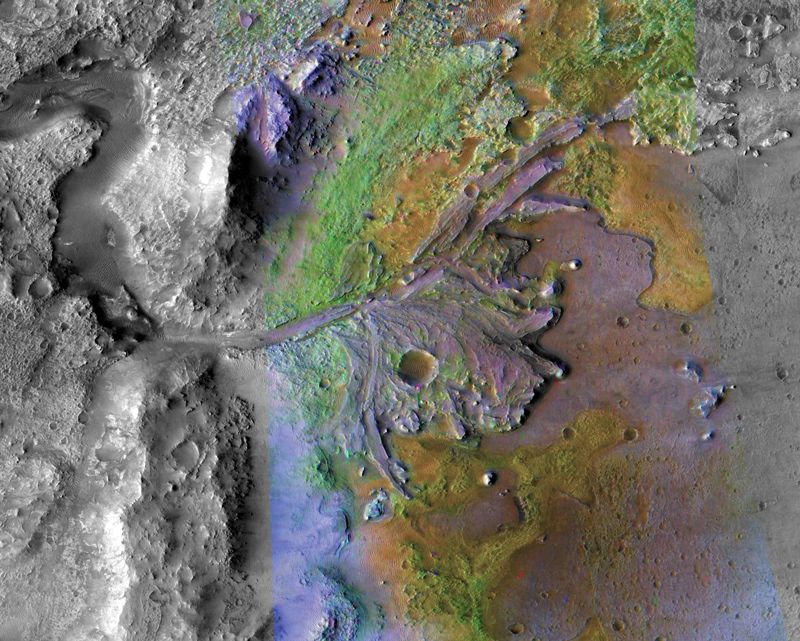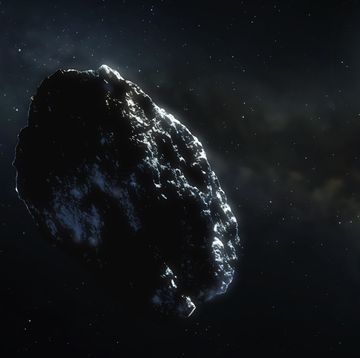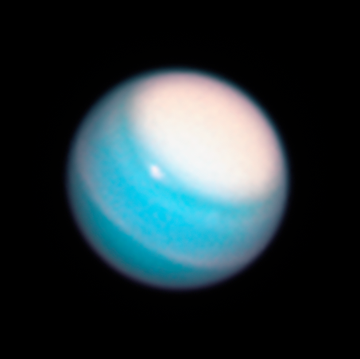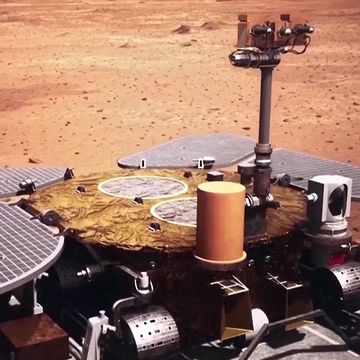More than a year ago, NASA’s Perseverance rover soared through the Martian atmosphere and touched down on the Red Planet.
“We closed our eyes in Florida and opened them on another planet,” Jim Bell, the principle investigator of the rover’s camera, Mastcam-Z, and a researcher at Arizona State University, tells Popular Mechanics.
Since then, the rover and its accompanying rotorcraft, Ingenuity, have explored the sights and sounds of the Red Planet and even aced an experiment to produce oxygen from carbon dioxide.
Overall, the rover’s primary mission to explore the geology of Mars has been successful. It’s zipped around the 28-mile-wide Jezero Crater, snapping pictures, collecting samples, and providing an ever-expanding view of Mars’ ancient past. In the coming year, the rover is scheduled to explore the crater’s most important feature.
Cut to the core
Since Perseverance began its sampling campaign last August, it has collected 43 pencil-sized samples of rock—ranging from olivine-rich volcanic rock to crumbly sedimentary rock—from various locations within the crater. Researchers hope that these core samples will unearth answers to some of the region’s deepest geologic mysteries.
The process hasn’t always been easy, though.
The rover has faced several harrowing moments while gathering these cores. The first sample Perseverance collected, for instance, dissolved into dust when gathered in August, stumping scientists back on Earth who expected a core sample tube filled with rock, but instead found air.
“That was totally bizarre because the engineers that have been testing this back on Earth on all kinds of rocks, they had never seen this behavior,” Briony Horgan, a planetary scientist, at Purdue University in West Lafayette, Indiana, . (Fortunately, the team was able to use this sample to capture atmospheric conditions on the planet instead.)
In December, the rover faced a different challenge. When collecting a sample from a rock dubbed Issole, rubbly bits of rock fell into the rover’s sample collection carousel. Engineers back on Earth worked with the life-sized copy of the rover back on Earth to troubleshoot the issue.
Now, the rover is making its way toward its primary destination—a dried river delta where researchers hope to find evidence of ancient life—to gather what may be the most important core samples ever collected on another world.
Delta blues
Perseverance was initially scheduled to head straight for the delta, but the path from the location it landed in, a spot named after Octavia E. Butler, to the delta was blocked by a series of sand dunes. After a year-long detour in which it explored locales just south of the crater, it’s finally time to explore the pinnacle of Martian geology. The rover should arrive at its destination in April.
Horgan and her colleagues believe the delta, estimated to be between roughly 3.6-3.8 million years old, could provide the best opportunity to search for signs of ancient life—the ultimate goal of the mission.
“That’s where, on Earth, you see a lot of organic material that’s washed way out into the lake or even into the ocean, and deposited and mixed in with the mud,” Horgan says. “What we’re trying to go for is that concentrated, organic material that we can use to help reconstruct what ancient life of Mars might have looked like.”
On the whole, deltas are gentle environments. This means the rock deposits they leave behind, often made up of fine-grained mud and sand, build up slowly over time. On Mars, researchers expected to see the same thing—more fine-grained sediment.
Instead, images of the delta revealed a number of strange features, including massive boulders—some the size of the rover—strewn throughout the delta’s rock layers. “What that tells us is it wasn’t just this nice gentle process the whole time,” Bell says. “There were sporadic episodes of what must have been incredible violent floods that are transporting enormous boulders across huge distances.” The team published its observations last year in the journal Science.
The next step is to try to identify what may have caused these floods. Bell says there are a couple of working hypotheses—could it have been a natural dam break or an asteroid impact that scattered debris? Ultimately, they’re just that: theories.
“Nobody knows, which is what’s fun,” he says. “But we have a working avatar on the surface that is there to be the projection of us to try to explore and answer those types of questions.” Researchers like Bell and Horgan are trying to place findings like these in the broader context of Mars’ geologic history. What could these bouts of flooding mean for the possible preservation of ancient life on Mars? What was the environment like? How has it differed from what we see on Earth?
The floor is lava
One of the most fascinating finds from the rover’s exploration so far, Horgan says, was the discovery of lava rock on the floor of Jezero Crater. From orbit, geologists spotted lobes of dark rock with “weird” edges that looked like they flowed around other features—characteristics similar to those found on Earth’s lava formations, she explains.
“But we’ve been fooled on Mars before,” Horgan says. “It turns out a lot of stuff that looks like lava on Mars is actually a sedimentary rock.”
But when it was finally came time to examine one of outcrops—it took the rover roughly six months to get the region, dubbed Seitah—the data revealed that the rocky layers were from an ancient lava flow, after all. “When the crystals in this lava flow crystallized and settled out of the melt they were in, they just happened to form these these nice layers,” Horgan says. “That was a huge surprise.” In addition to examining the outcrop with its suite of high tech instruments, the rover also collected several samples from the layered lava rock.
These samples, she says, will be especially important to bring back to Earth because they’ll provide a record of when certain events happened in the history of Jezero Crater. “Lava is really great at basically trapping signs of when it formed, so we can use lava to date [the delta] and get an age of when it crystallized.”
Seek and return
Sending Perseverance to the Martian surface to gather the samples was just the first of many steps. The ultimate goal of this interplanetary relay is to bring samples of Mars rock to Earth for the first time ever.
“The more we learn about other places in our solar system, the more we learn about our own planet,” Bell says. These samples could, for example, shed light on the evolution of Mars’ climate from a warm and wet to cool and dry, and subsequently teach us about the planet’s geologic features. And, of course, they could answer our questions about whether life may have existed there.
NASA and the European Space Agency are working together to develop an elaborate system that will launch for Mars in mid to late 2020s. This multi-part system is comprised of a lander, fetch rover, ascent vehicle, and return orbiter.
Once the lander safely arrives on Mars’ surface, the fetch rover will set out in search of Perseverance’s discarded sample tubes. The fetch rover will find these samples and, like a cosmic game of pick-up-sticks, grab them, stow them, and then return them to the lander. The lander will then deposit them in a small pod within the launch vehicle to be launched a short time later.
A short time later, this pod will launch from the Martian surface using a cold-launch. The agency has tapped industry giant Northrop Grumman to develop the ascent vehicle which, Scientific American reports, will be propelled by an aluminum-based fuel.
Another bonus? Not only would this mission represent the first time that samples are brought back to Earth from the Red Planet, but it would also mark the first time a vehicle is launched from the surface of another planet.
Jennifer Leman is a science journalist and senior features editor at Popular Mechanics, Runner's World, and Bicycling. A graduate of the Science Communication Program at UC Santa Cruz, her work has appeared in The Atlantic, Scientific American, Science News and Nature. Her favorite stories illuminate Earth's many wonders and hazards.
